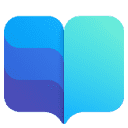
As generative AI moves from tech headlines to daily work—with people using ChatGPT to write reports, MidJourney for design, and DALL-E to create prototypes—countless others are stuck in a dilemma: eager to try but afraid of the difficulty. They worry about needing complex coding skills, struggle to understand jargon like “large language models” or “diffusion models,” and don’t know which tool to start with. However, the Generative AI for Beginners course—developed by a global team of AI educators and generative AI experts—has become the “key to generative AI for over 100,000 zero-experience learners,” thanks to its core principles of “zero barriers, hands-on focus, and low cost.” By 2025, the course has reached 120 countries, with 82% of learners having no prior AI experience—yet most can independently complete practical tasks like “AI copywriting” and “AI visual design” within one month. Drawing on course details, real-world cases, and learning logic, this article breaks down why it stands as “the first essential course for generative AI beginners.”
I. Course Positioning: More Than “Tool Training” – Teaching “Generative AI Fundamentals and Practical Thinking”
Generative AI for Beginners is not just a “tool manual”—it’s a complete learning system for “generative AI cognition + hands-on practice + application,” designed specifically for zero-experience learners. Core members of the course development team come from Stanford’s AI Lab and OpenAI partner organizations, and their mission is clear from the course’s opening: “We don’t train you to be an AI engineer—we train you to be someone who ‘solves problems with generative AI’—whether for work efficiency, study support, or creative expression.”
The course’s competitive edge stems from three differentiated positioning points:
- Zero-Experience Friendly: It abandons the traditional “theory first, practice later” model entirely, adopting a “learn by doing first, then understand the ‘why’” approach. Even professionals or students with no coding or math background can follow step-by-step to complete hands-on tasks;
- Scenario-Based Learning: No abstract concepts are piled up—all content revolves around high-frequency workplace/life scenarios, such as “writing product copy with ChatGPT,” “designing event posters with MidJourney,” and “generating data analysis reports with AI.” What you learn can be applied immediately;
- Lightweight Learning: With a total duration of just 20 hours, split into 40 short 15–30 minute lessons, it supports fragmented learning (e.g., during commutes or lunch breaks). It also includes “step-by-step visual guides” to prevent learners from “giving up halfway.”
II. Core Content Structure: Four Modules Building Generative AI Skills “From Entry to Practice”
The course is layered by the logic of “cognition → tools → practical projects → ethics,” with each module paired with “video tutorials + hands-on manuals + after-class exercises” to ensure learners “understand, master, and apply” what they learn.
1. Foundational Cognition Module: Understanding “What Generative AI Really Is”
For beginners afraid of jargon and theories, this module breaks down core concepts using “everyday analogies—no complex formulas included. Key content includes:
- Generative AI’s “Underlying Logic”: It uses “a chef following a recipe to cook” to analogy “AI generating content from data,” explaining the core roles of “large language models (LLMs)” and “diffusion models.” You don’t need to grasp technical details—just know that “LLMs excel at text (e.g., ChatGPT) and diffusion models excel at images (e.g., MidJourney)”;
- “Functional Boundaries” of Mainstream Tools: It compares differences between ChatGPT, Claude, MidJourney, DALL-E, and Stable Diffusion. For example, “ChatGPT is ideal for copywriting/summaries, MidJourney for artistic design, and DALL-E for realistic commercial-style visuals”—helping learners avoid “wasting time on the wrong tool”;
- “Usage Principles” for Generative AI: It explains “why generative AI needs ‘prompts’” and “how to avoid AI generating false information.” Using the analogy “giving AI clear instructions is like giving a colleague clear requirements,” beginners learn that “a good prompt is ‘specific and organized’.” The highlight of this module is its “anti-abstraction.” For instance, when explaining “context windows,” it uses “AI has limited ‘short-term memory’—long conversations need to be split into parts”—making it easy even for liberal arts majors to understand. An administrative specialist shared: “I used to panic when I heard ‘large language models.’ After this lesson, I realized it’s just ‘AI that understands human language and writes text’.”
2. Tool Hands-On Module: Step-by-Step Guidance to “Solve Specific Problems with AI”
As the course’s “core module,” it focuses on 3 types of must-learn tools for beginners. Each tool is paired with practical tasks based on “high-frequency scenarios,” with steps detailed to “which button to click and what command to input”:
- Text Tools (e.g., ChatGPT):
- Workplace Scenarios: Teaches you to use the “Prompt Formula (Goal + Requirements + Background)” to write product copy, meeting minutes, and email replies. Example: “Write copy for baby food targeting young mothers, emphasizing ‘no additives’ and ‘easy preparation,’ for use on e-commerce product pages”;
- Study Scenarios: Uses ChatGPT to “summarize research papers” and “organize key knowledge points.” Example: “Summarize this English paper on ‘generative AI ethics’ into 300 Chinese characters, highlighting research conclusions”;
- Pitfall Avoidance: Explains “why AI sometimes ‘makes things up’ (hallucinations)” and teaches you to “ask AI to ‘cite sources’ and ‘argue point-by-point’” to reduce errors. Example: “When asking AI to write an industry report, add: ‘Every claim must include a data source; note if no source exists’.”
- Image Tools (e.g., MidJourney):
- Basic Operations: From “creating an account” and “joining a Discord server” to “inputting /describe commands,” every step includes screenshots. It even teaches you “how to adjust image ratios (16:9 for posters, 1:1 for social media)”;
- Style Control: Achieves different styles through “keyword combinations.” Example: “For a ‘minimalist Japanese-style coffee shop poster,’ the prompt could be: ‘minimalist Japanese style, coffee shop poster, warm tones, no people, clean background’.” It also provides a list of 100+ common style keywords;
- Commercial Usage Notes: Warns “MidJourney’s free version has copyright restrictions—upgrade to the paid version for commercial use” to help learners avoid “copyright pitfalls.”
- Low-Code Generation Tools (e.g., Canva AI):
- For those “who need to design posters/PPTs but have no design skills,” it teaches you to use Canva’s AI features to “auto-generate templates” and “one-click style changes.” Example: “Type ‘company annual dinner invitation,’ and AI will generate 10 templates in different styles—just replace text and logos to use.”
A marketing intern shared: “After learning to write copy with ChatGPT, I tried drafting 3 Xiaohongshu posts for the product team. My supervisor said ‘they’re more focused than my previous work’—now the team lets me use AI to draft all first versions.”
3. Practical Project Module: “Reinforce Learning” with 3 Real-World Tasks
This module takes learners “from ‘learning tools’ to ‘using tools to solve problems’.” Each project simulates workplace/life scenarios and requires integrating skills from multiple tools:
- Project 1: AI-Assisted “E-Commerce Product Operations”: Use ChatGPT to write product page copy, MidJourney to design main product images, and AI tools (e.g., ChatExcel) to process sales data—finally delivering “a complete set of e-commerce product promotion materials”;
- Project 2: AI-Assisted “Personal Study/Job Hunting”: Use ChatGPT to organize major knowledge points, AI tools (e.g., ResumeAI) to optimize resumes, and MidJourney to design portfolio covers—helping students and new professionals boost study/job search efficiency;
- Project 3: AI-Assisted “Creative Expression”: Example: “Write a modern poem about ‘spring’ with ChatGPT, then use MidJourney to illustrate scenes from the poem”—ideal for hobbyists exploring AI’s creative potential.
Each project includes “reference cases” and “grading criteria.” After completion, learners can submit assignments, and teaching assistants provide feedback on “areas for improvement” within 24 hours. A college student optimized his resume using Project 2’s techniques and got an internship offer for an operations role at ByteDance: “I added ‘used AI tools to optimize internship reports’ to my resume. The HR specifically asked about it during the interview, saying I ‘understand using AI to boost efficiency’.”
4. Ethics & Safety Module: Avoiding “Pitfalls When Using AI”
Addressing generative AI’s “potential risks,” this module teaches learners to “use AI responsibly”:
- Copyright Issues: Clarifies “ownership of AI-generated content.” Example: “Images generated with MidJourney are free for personal non-commercial use—obtain platform authorization for commercial use”;
- Information Security: Warns “do not input sensitive information (e.g., ID numbers, company secrets) into AI” and explains “why AI may ‘leak’ input content”;
- Content Compliance: Teaches you to “identify AI-generated misinformation.” Example: “When asking AI to write industry data, cross-verify with third-party reports—avoid directly citing AI-generated data without sources.”
An enterprise administrative manager shared: “I used to worry about employees leaking company information via AI. After this lesson, I created an ‘AI Usage Policy’ for the team—now we can use AI to boost efficiency without security concerns.”
III. Core Advantages: Four Traits That Outshine Other Introductory Courses
Among numerous generative AI courses, Generative AI for Beginners attracts over 100,000 zero-experience learners thanks to four irreplaceable advantages:
1. “True Zero Barriers”: No Coding, No Math Required
The course completely breaks the myth that “learning AI requires technical skills.” All hands-on tasks use tools’ “graphical interfaces”—no code writing needed. All theories use “everyday analogies”—no calculus or probability required. Even 50-year-old professionals can follow steps to create AI copy. A finance manager shared: “I’m even afraid of Excel formulas, but this course taught me to summarize financial reports with ChatGPT. Now I save 2 hours on first drafts of monthly reports.”
2. Scenario-Based, Not “Tool-Centric”: Learning “Problem-Solving Logic”
Unlike tool tutorials that “only teach ‘which button to click’,” the course focuses on “why to use a tool this way.” For example, when teaching ChatGPT copywriting, it doesn’t just provide prompt templates—it explains “why to include ‘target audience’ and ‘usage scenario’.” This lets learners “apply logic to new situations.” After learning to write “baby food copy,” for instance, they can deduce the prompt structure for “skincare product copy” instead of just copying templates.
3. Low Cost, High Value: Free Foundational Content, Reasonably Priced Advanced Content
The course’s “Foundational Cognition Module” and “Basic Tool Hands-On Module” are completely free, including 4 hours of videos and 10 hands-on manuals—letting learners “try before buying advanced content.” The advanced module (practical projects + teaching assistant feedback) is priced at only 199 yuan (≈$28), far lower than similar paid courses (most cost over $70). It also includes “1 year of content updates” (updating guides when tools iterate).
4. Community Support: A “Mutual-Aid Network” of 100,000 Learners
The course includes a WeChat community (with English support channels) where learners get three key benefits:
- Q&A Support: When facing issues like “AI-generated content not meeting expectations” or “tool operation errors,” post questions and get replies from teaching assistants or experienced learners within 1 hour. Example: Someone asked “why MidJourney generates weird facial features,” and the community shared “adding ‘photorealistic, detailed face’ to prompts fixes this”;
- Resource Sharing: The community regularly shares “latest prompt templates,” “free AI tool credits,” and “commercial copyright guides.” When ChatGPT launches new features, members compile “step-by-step guides for new functions”;
- Achievement Sharing: Learners share “AI-created works” (e.g., AI-designed posters, AI-written copy). Outstanding works are promoted on the course’s official account, and some learners even get “AI-assisted design” freelance gigs through the community.
IV. Target Audience: Who Should Take Generative AI for Beginners?
The course isn’t “one-size-fits-all,” but it offers exceptional value for four groups of zero-experience learners:
1. New Professionals/General Staff: Boost Work Efficiency with AI
If you spend hours writing copy, summarizing documents, or organizing data, this course helps you “delegate repetitive work to AI and focus on higher-value tasks.” An internet operations specialist increased efficiency by 40% after the course: “I use ChatGPT to write Xiaohongshu posts and AI tools to analyze user portraits. What used to take 3 hours for an event plan now takes 1 hour for a first draft—leaving time for creative optimization.”
2. Students: Use AI to Support Study and Job Hunting
For college students, the course helps “summarize research papers, outline essays, and optimize resumes” with AI. A Chinese literature student improved review efficiency by 30% using ChatGPT to organize “ancient literature key points.” A new graduate used the course’s “AI resume optimization tips”—adding “used AI to assist internship report writing” to his resume—and got an operations offer at ByteDance.
3. Entrepreneurs/Freelancers: Reduce Costs with AI
Entrepreneurs no longer need to hire expensive designers or copywriters; freelancers can expand their services. A startup founder saved nearly 10,000 yuan (≈$1,400) on design fees by using MidJourney for brand logos and ChatGPT for product manuals. A freelance writer increased orders from 5 to 8 per month (a 60% income boost) by using AI to “draft content and research materials.”
4. Hobbyists: Use AI to “Express Creativity”
If you enjoy writing or design but have no professional training, this course helps you “turn ideas into works with AI.” A retired teacher used ChatGPT to write memoirs and MidJourney to illustrate memories: “I used to want to document my life but was afraid of bad writing or drawing. Now AI helps me ‘bring these ideas to life’—it’s incredibly rewarding.”
V. Learning Guide: Pitfall Avoidance Tips and Progression Paths
1. Efficient Learning Tips
- Learn “Foundational Cognition” Before “Tool Hands-On”: Don’t rush to learn MidJourney just because it’s popular. First understand “generative AI’s functional boundaries” to avoid “learning a tool without knowing how to apply it to your scenarios”;
- Learn by Doing—Don’t “Only Watch, Not Act”: After learning a tool, immediately complete the corresponding after-class exercise (e.g., after learning ChatGPT copywriting, draft copy for your own work). “Hands-on practice” is the key to retention;
- Leverage “Free Resources”: Finish the free foundational modules first to confirm you “truly need advanced content” before paying—avoid “impulse purchases.”
2. Pitfall Avoidance Reminders
- Don’t “Over-Rely on AI”: AI-generated content needs “human review.” For example, check if AI-written copy “aligns with brand tone” and if AI-designed graphics “have copyright risks”—avoid “treating AI errors as your own”;
- Don’t “Only Learn Tools, Not Logic”: Tools iterate (e.g., ChatGPT adds new features), but “AI problem-solving logic” stays the same. The principle of “clarifying needs and giving AI specific instructions” applies to all generative AI tools;
- Don’t Chase “Perfect Prompts”: Beginners don’t need to fixate on “universal prompt templates.” Focus on “first generating usable content, then optimizing gradually.” For example, if you can get 3 draft copies from AI when starting out—that’s progress. You don’t need “perfect copy on the first try.”
3. Progression Paths
- Foundational Stage (1 Month): Complete all course modules and independently use AI for “copywriting, simple design, and data organization”;
- Advanced Stage (2–3 Months): Deepen learning in one AI tool area. For example, “learn local deployment of Stable Diffusion if you want to design” or “learn ChatGPT plugin use (e.g., Code Interpreter) if you want to write content”;
- Professional Stage (3+ Months): Learn “AI prompt engineering” and “copyright compliance for AI-generated content.” Even try “developing simple apps with AI tools (e.g., building a personal assistant with the ChatGPT API).”
Conclusion: The “Key to Generative AI” Lies in “Daring to Use and Knowing How to Use”
The success of Generative AI for Beginners essentially comes from addressing a core pain point for zero-experience learners: “Learning generative AI isn’t about understanding technology—it’s about using technology to solve problems.” It doesn’t pursue “academic depth,” but uses “down-to-earth content” to let ordinary people access generative AI. It doesn’t rely on “high-priced fees,” but uses “sincere free resources” to let more people try and use AI.
For 2025 learners, this course is more than a “generative AI intro course—it’s a “tool course to boost competitiveness.” In a future where AI becomes increasingly prevalent, “knowing how to use generative AI” will be as basic a skill as “knowing how to use Excel.” As the course developers say: “Generative AI isn’t ‘technology for the few—it’s a tool everyone can use.” From your first lesson to your first AI hands-on task, you’re just one “step of action” away from “using AI to boost efficiency and realize creativity.”
Relevant Navigation


Kaggle

Trancy

Udacity AI School

PublicPrompts

Dive into Deep Learning

AISEO AI Content Detector

Day of AI

